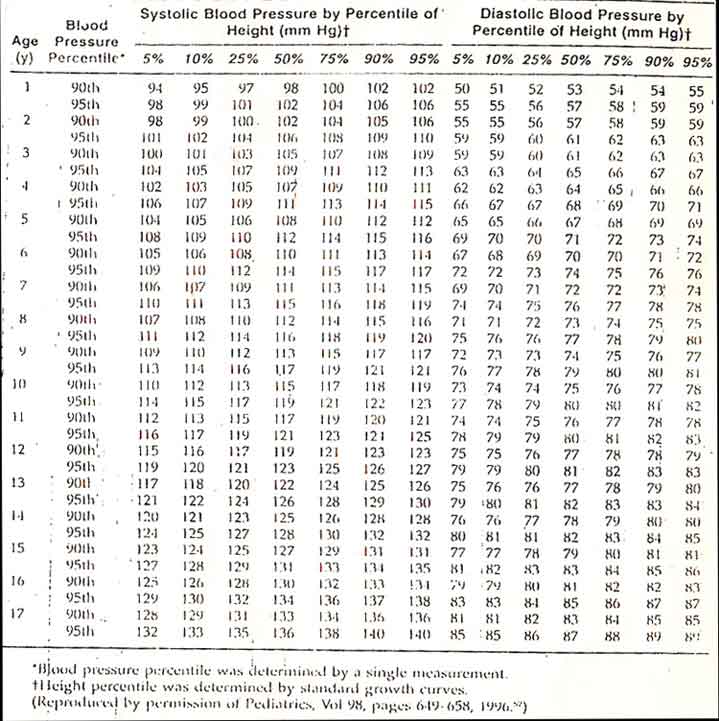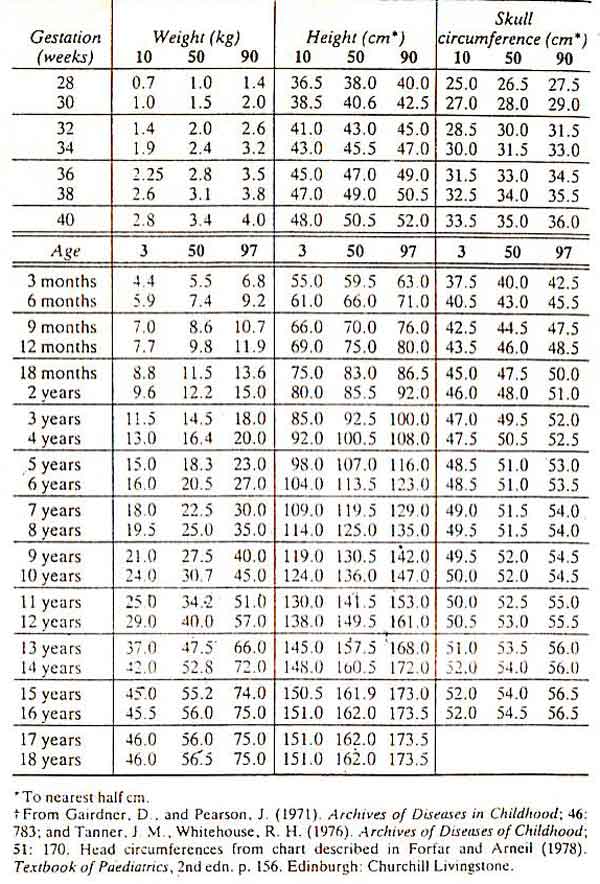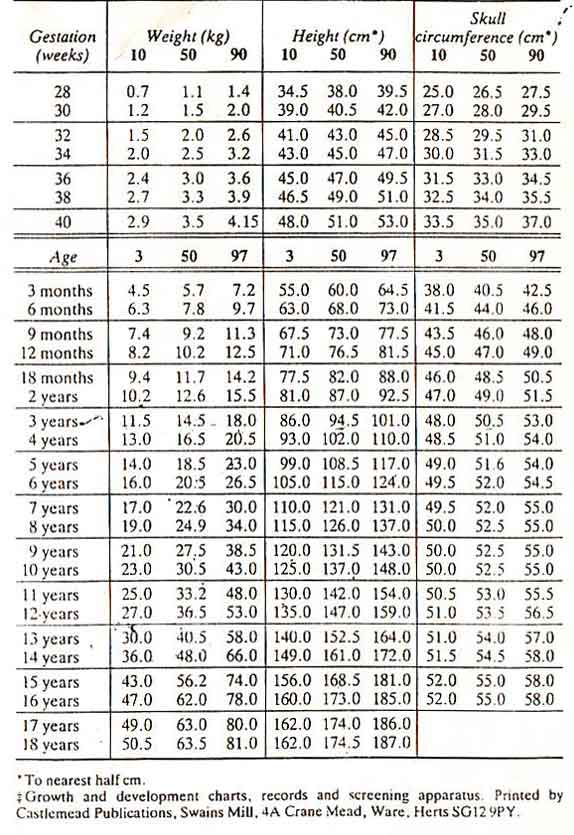Child 24X 7 Helpline
Phone: +91 9810056991anilvaishnavi@gmail.com
Paediatrics
DISEASES
DISEASES
Is It Asthma?
Consider asthma if any of the following signs or symptoms are present:
| Frequent episodes of wheezing- more than once a month | ||
| Activity induced cough or wheeze. | ||
| Cough particularly at night during periods without viral infections. | ||
| Absence of seasonal variation in wheeze | ||
| Symptoms that persist after age -3 | ||
| Symptoms occur or worsen in the presence of: | ||
| 1. Aeroallergens (house dust mites, companion animals, cockroach, fungi) 2. Exercise 3. Pollen 4. Respiratory (viral) infections 5. Strong emotional expression 6. Tobacco smoke |
||
| The child colds repeatedly "go to the chest” or take more than 10 days to clear up. | ||
| Symptoms improve when asthma medication (short acting bronchodilator or inhaled corticosteroid) is given. | ||
Differential Diagnosis of Asthma in children 5 years and younger
| Infections:- | ||
| Recurrent respiratory tract infections | ||
| Chronic rhino-sinusitis | ||
| Tuberculosis | ||
| Congenital Problems:- | ||
| Tracheomalacia | ||
| Cystic Fibrosis | ||
| Bronchopulmonary dysplasia | ||
| Congenital malformation causing narrowing of the intrathoracic airways | ||
| Primary ciliary dyskinesia syndrome | ||
| Immune deficiency | ||
| Congenital heart disease | ||
| Mechanical Problems:- | ||
| Foreign Body Aspiration | ||
| Gastroesophageal Reflux | ||
Levels of asthma control in children 5 years and younger
Characteristic |
Controlled (All of the following) |
Partly controlled (Any measure present in any week) |
Uncontrolled (Three or more of features of partly controlled asthma in any week) |
Daytime symptoms: wheezing cough, difficult breathing |
None (Less than twice / week typically for short periods of on the order of minutes and rapidly relieved by the use of a rapid-acting bronchodilator) |
More than Twice / week (typically for short periods on the order of minutes and rapidly relieved by the use of a rapid-acting bronchodilator) |
More than Twice / week
(typically last minutes or hours or recur, but partially or fully relieved with rapid-acting bronchodilators) |
Limitation of activities |
None child is fully active, plays and runs without limitation or symptoms) |
Any (May cough, wheeze, or have difficulty breathing during exercise, vigorous play or laughing) |
Any (may cough, wheeze, or have difficulty breathing during exercise, vigorous play or laughing) |
Nocturnal
Symptoms / awakening |
None (including no nocturnal coughing during sleep) |
Any (typically coughs during sleep or wakes with cough, wheezing and/or difficult breathing) |
Any (typically coughs during sleep or wakes with cough, wheezing and/or difficult breathing) |
Need for reliever / rescue treatment |
<= 2 days / week |
> 2 days / week |
> 2 days / week |
Asthma Management Approach Based on control for children 5 years and younger
Asthma Education
Environment Control
As need rapid-acting beta2 agonist
Controlled on as needed rapid-acting beta2 agonists |
Partly controlled on as needed rapid-acting beta2 agonists |
Uncontrolled or only partly controlled on low-dose ICS* |
Continue as needed rapid-acting beta2 agonists |
Low dose ICS Leukotriene modifier |
double low dose ICS Low dose ICS plus leukotriene modifier |
*Oral glucocorticosteriods should be used only for treatment of acute severe exacerbations of asthma.
Shaded boxes in this table represent the preferred treatment options:
Low daily doses* of inhaled glucocorticosteriods for children 5 years and Younger
Drug |
Low Daily Dose(µg) |
Beclomethasone Dipropionate |
100 |
Budesonide MDI † spacer |
200 |
Budesonide Nebulized |
500 |
| † Ciclesonide |
NS |
Fluticasone Propionate |
100 |
† Mometasone Furoate |
NS |
† Triamcinolone Acetonide |
NS |
*A low daily dose is defined as the dose which has not been associated with clinically adverse effects in trails including measures of safety. This is not a table of clinical equivalence.
† NS means Not Studied in this age group
Choosing an inhaler device for children with asthma
Age Group |
Preferred Device |
Alternative Device |
Younger than 4 years |
Pressurized metered dose inhaler plus dedicated spacer with face mask |
Nebulizer with face mask |
4-5 years |
Pressurized metered dose inhaler plus dedicated spacer with mouthpiece |
Pressurized metered dose inhaler plus dedicated spacer with face mask or Nebulizer with mouthpiece or face mask |
Initial management of acute severe asthma in children 5 years and younger
Therapy |
Dose and Administration |
Supplemental Oxygen |
Deliver by 24% face mask (flow set to manufacturer instructions, usually 4L/min) Maintain oxygen saturation above 94% |
Short acting beta2 agonists |
2 puffs salbutamol by spacer or 2.5 mg salbutamol by nebulizer Every 20 minutes for first hours |
Ipratropium |
2 puffs every 20 minutes for first hour only |
When to call the doctor?
| Repeated vomiting, especially if it upsets the child. | ||
| Frequent loose or abnormal motions. | ||
| Persistent crying, indicating pain somewhere. | ||
| Sudden shrieks of pain, even if not repeated in a short while. | ||
| Difficulty with breathing. | ||
| Any abnormal discharge, especially from the ears. | ||
| Any sudden change in the child’s appearance making him look ill. | ||
Safety Tips
| Keep all medicines out of your child’s reach in a closed compound. | ||
| Check all electrical wires to see that they are not frayed or damaged. | ||
| Fit safety socket covers on all electrical points. | ||
| Lock away all pins needles scissors, matches, lighters, knives or other sharp object. | ||
| Never leave your child unattended in a high place, kitchen or bathroom. | ||
| Keep aerosol cans, sprays, toilet cleaners etc. out of your baby’s reach. | ||
| Don’t leave plastics bags lying around. Once over a child’s head, they could cause suffocation. | ||
Breast Feeding is the best feeding. It should be started as soon as possible after Delivery. Colostrums (Breast milk for first 2 Days) is very important for the child’s health. Exclusive Breast feeding is recommended for the first 4-5 months. Feed in a position with the baby’s head held higher. Burp the baby after every feed. No additional water or supplements are required for the first 4-5 month. |
||
| Bottle feeding is dangerous for the child in many ways. Use cup and a spoon instead. | ||
| Keep the body (especially the newborn) warm. | ||
| Avoid, oil/buds instillation in nose/ ears & kajal application to eyes. | ||
Weaning ( addition of semisolid feeds) is recommended from the 5th month onwards. Soft rice, kanji, thin
dal, mashed boiled potatoes, soft mashed banana etc., are recommended weaning feeds. Vomiting may
occur in the initial stages till the child gets used to the feed. Hence introduce only one feed at a time. |
||
| Gradually add semisolid and solid feeds, including green leafy vegetables. | ||
| Generally cereals, pulses, green leafy vegetables, eggs, fish, jiggery & groundnuts are required for a balanced diet. | ||
| Keep medicines , kerosene and other poisonous product away from the reach of children ( especially toddlers) | ||
| Follow up the growth pattern of your child regularly. | ||


Table3 : Centile table for girls

Table4 : Centile table for boys

Table5 : Surface Area nomogram


